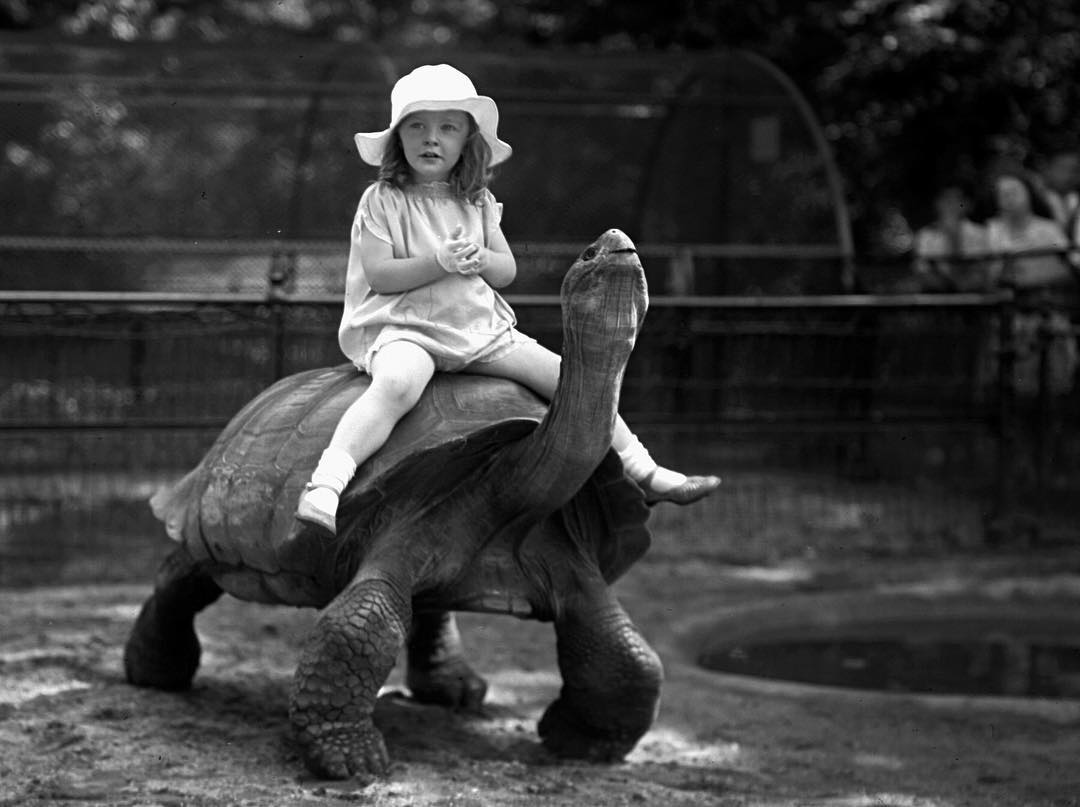I've worked both of the giant tortoises, Galapagos and Aldabra, as well as many other good-sized ones, such as spur-thighed, leopard, and radiated. It seems like everyone has memories of giant tortoises from some time in their youth. Many involve riding them.
Offering (very slow) giant tortoise rides was a common feature of many zoos in decades past, including such renown institutions as the Bronx Zoo and San Diego Zoo. Nor was the practice strictly limited to zoos. Walter Rothschild rode the tortoises in his private collection, and even the premier biologist of all-time, Charles Darwin, took a break from his groundbreaking fieldwork on the Galapagos to go for a wild tortoise ride.

Walter Rothschild riding a giant tortoise, from the archives of the London Natural History Museum
If pony, camel, and elephant rides are far less common in zoos today than they used to be, tortoise rides are even rarer. Out attitudes towards animal welfare have evolved tremendously, and there is concern about sitting on what is essentially the backbone of an animal. The fact that tortoises are rather stoic by nature and don't readily show pain or discomfort in a way that many people will readily interpret is problematic as well.
To be honest, unless we're talking about an NFL linebacker or two, I doubt a person riding a tortoise will inflict pain. In the wild, the female tortoise has to bear the weight of the massive male clambering on top of her without issue. A small child certainly is a managable load in comparison. Maybe not for all day, but unlikely to do any harm. I found myself once clinging to the top of a big Galapagos tortoise's shell as I tried to steer him into his winter quarters, and he essentially carried me for a few dozen yards. If I'd been a butterfly that had lit on top of his shell, I doubt he could have cared or noticed less.
I feel like the real reason that we've phased out tortoise rides is messaging. Camels and ponies are at least domestic animals, and while they are less and less common, elephant rides have centuries of tradition behind them. Letting visitors just sit on the back of a wild animal and see if it does something is treating the animal like a toy or a prop, not as a focus of the zoo's mission.
If we're going to let children sit on wild animals, we might as well go all-in and try it with polar bears or jaguars - you know, let the animals get some enrichment value out of it too. Or we could just put up life-sized statues of tortoises for kids to sit on. Most won't know the difference.

It is actually harmful for their lungs
ReplyDelete